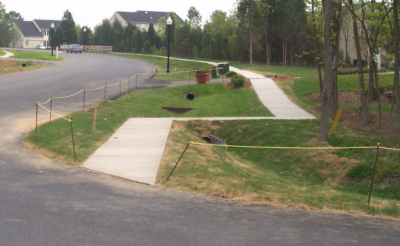RALEIGH — North Carolina’s new stormwater rules take effect New Year’s Day, allowing for more flexibility before construction and a new expedited permitting process, but only time will tell whether the changes do enough to protect water quality.
The rules overhaul was the result of a North Carolina General Assembly mandate that the Department of Environmental Quality provide clear guidelines based on the most recent science. During the three-year development process, DEQ consulted with a group of about 25 stakeholders, including developers, local government officials and environmentalists.
Supporter Spotlight
Annette Lucas, an environmental engineer at DEQ who worked on the rules, said the group was diverse in opinions and experiences.

“What we developed is based on a consensus from all those groups,” she said, adding that the new process created rules that were clearer and better organized.
A new fast-track permitting process in the rules gives state-licensed engineers and landscape architects authority to build stormwater systems without state review beforehand. The applicants must send in only basic information to get approval to build the system and the state will follow up afterward with a compliance review.
The new process aims to shorten permit approval times from 90 days to about a month.
The Rules Review Commission adopted 18 of the 32 proposed stormwater rules during its meeting on Aug. 18, but the commission objected to 14 of the rules, based on the way the term “licensed professional” was used in the proposed language. The language was changed to allow licensed landscape architects, rather than only professional engineers, to sign off on submitted plans, and the commission adopted the remaining 14 rules during its meeting on Nov. 17.
Supporter Spotlight
The commission received no letters objecting to the new rules. State officials said this was likely because the rules crafted were agreeable to a wide variety of stakeholders.
“The state, in cooperation with a lot of stakeholders, has worked hard to develop rules that will protect our water quality from stormwater runoff while at the same time providing more flexibility and options for designers than we’ve had in the past,” Lucas said.
DEQ staff is working to make available application forms and the stormwater design manual and update the state stormwater permit website by Jan. 1, 2017.
Questions Raised
Despite the wide variety of opinions considered, several concerns have been raised about the upcoming rules.
Lucas said there is “risk” in the self-permitting provision allowing stormwater systems to be built before the state looks at the designs.
“They’re promising it’s going to comply before it’s built and before we’ve reviewed and approved the plan,” she said.
Todd Miller, executive director of the North Carolina Coastal Federation, was a member of the stormwater stakeholder committee that helped formulate the rules. He said the new self-permitting system may discourage engineers who are afraid to take on the project without the state signing off as well.
A mistake could lead to an expensive repair or put at risk the engineer’s license.

“There’s still a lot of question of whether the individual engineers are really going to want to take on the liability that’s associated with it,” Miller said, “so it puts a lot more responsibility on them. If they do something wrong, they’re going to be financially liable.”
However, Miller said the new rules bring some assurance that systems are built according to permits, assurance that is currently lacking.
“There have been issues where the systems have not been constructed as designed,” he said.
Over the long term, however, Miller worries about a larger question: What happens to these systems after they’re permitted and built?
He said that while maintenance is required, in practice, there aren’t enough resources to ensure that stormwater systems are properly maintained over the life of the system.
The lack of maintenance can be easy to spot: a stormwater pond full of cattails or a system clogged with debris. Miller said these are common examples of noncompliance with stormwater permits in the more than 14,000 stormwater systems now in place in the state’s 20 coastal counties.
“If you don’t have a program capable of making sure that things remain in good shape, most of your effort is wasted,” he said.
Miller said his frustration lies in the assumption that systems are going to maintained and upgraded properly.
“That that may be a bad assumption,” he said.
Miller said a selling point for the new rules is that not spending as much time on the up-front review would leave more staff time for oversight of existing systems and maintenance monitoring. Time will tell, he said.
Lucas, of DEQ, said the updated design standards include ways to make stormwater systems easier to maintain over time.
Natural Solutions
Miller and Lucas agree that managing stormwater is especially important in coastal North Carolina. Stormwater carries chemicals, bacteria and sediments and is the biggest cause of water pollution.

Rules to manage stormwater have been introduced and modified since the 1980s. However, water quality issues have led to state and local governments tweaking rules considered inadequate over time.
There has been promise shown in more natural, so-called “low-impact” solutions, including swales, which are shallow ditches that allow stormwater to pool and percolate through the ground. Miller said methods like these, which match the natural hydrology, are easier to maintain over time than complex systems.
“If you can keep the landscape functional and let nature do your work for you, then more passive systems are always better,”
Whether the new stormwater rules work as intended should be evident later in 2017, based on water quality testing in swimming and shellfishing waters.
“That would be the final arbitrator as to whether the proposals are working or not,” Miller said.
Learn More







